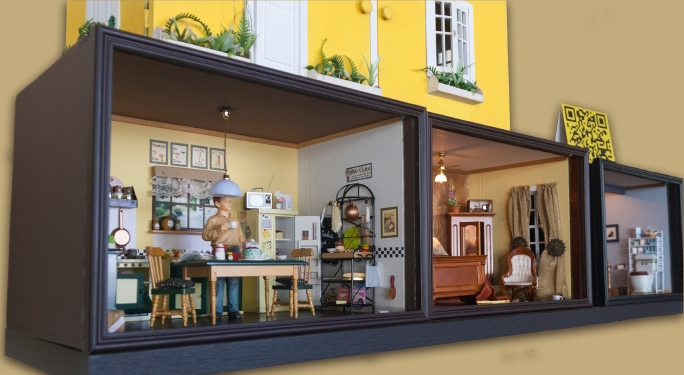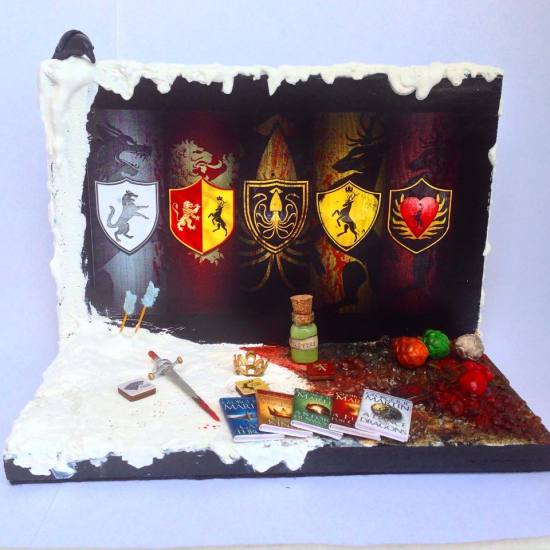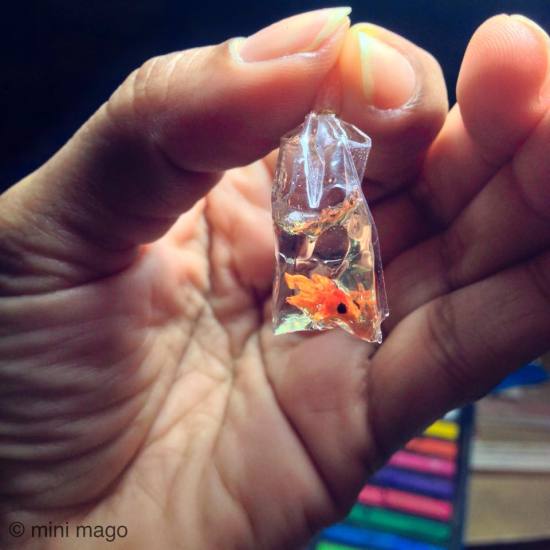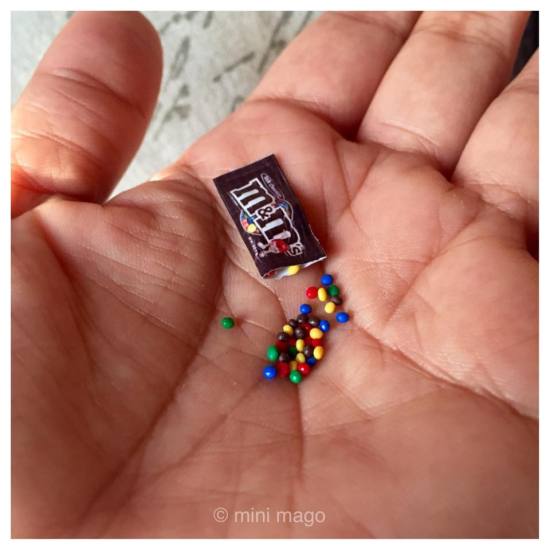
How much work goes into building a dollhouse? A lot, it turns out – Trudi Malalgoda Amadoru spends long hours creating intricately designed pieces, using everything from polymer clay to fabric, wood, board, paper and even recycled plastic. From the ever-popular minions of Despicable Me fame to a tiny goldfish suspended in a clear bag, to a Game of Thrones set or a dainty pair of milk bottle ear rings – there seems to be no limit to what Trudi can render in miniature.
First, Trudi builds the foundation of her dollhouse – roof, walls and all. Once complete, she sands her creation to ensure a smooth finish, seals it and then sands it again. Next, she begins to paint the walls, painstakingly sanding in between coats. If the customer wants working lights, she’ll install wiring just like in a real house, skillfully concealing them within the structure. Then she moves on to create details such as the windows, skirting boards for the lower walls, carpeting or parquet for the floor, and steps if the house has a second floor.
The result is an intricately detailed dollhouse, or what Trudi calls a ‘room-box’- a single room perfectly captured in miniature.
Even then, the work doesn’t end. Next she uses tweezers, blades and brushes to sculpt tiny figures out of polymer clay. Wardrobes, beds, hairbrushes, even tables laden with tiny plates of food emerge, rendered in astonishing detail.
It can take Trudi anything from five minutes to an entire month to complete a piece, depending on how complicated it is, but that wasn’t the biggest challenge she faced.
“Convincing those around me that miniatures could be something worth the effort and time, as opposed to what is considered a normal, safe or predictable job took some doing,”
Trudi said. She certainly seems to have succeeded in this endeavour, with people lining up to order Trudi’s detailed creations as gifts for their loved ones.
Trudi says her love for all things pocket-sized began when she was just a child. Now, this passion has grown to become a way of life for Trudi, and she wouldn’t have it any other way.
“My work is very therapeutic. It’s a really good way to focus your time and energy, collect your thoughts and be in the now. To be able to create something on top of all that is just a bonus,”
Trudi explained.
Trudi didn’t start out creating miniatures, though. Initially, she was a fashion designer, founding the brand Mago Inc, which is a self-made abbreviation of her last name, Malalgoda. Once she started creating miniatures, the name was changed to Mini Mago Inc. Trudi’s background in fashion and jewellery design has helped her immensely with this new project.
In fact, there are many common attributes between the different disciplines.
Skills like colour rendering, understanding types of fabric, knowing from where to source materials and how to deal with challenges and demands have helped Trudi stay focused and meet deadlines. The training she received from her teachers also helped her to pursue her passion.
Once completed, Trudi says she feels a sense of attachment to her pieces.
“Most of them are one of a kind, and since they are handcrafted, they are like my mini brood, which are all grown up and ready to leave home,” she laughs. “Reluctantly, I sent them to their new homes. Every one of my minis is my favourite!”
She wants to spread this sense of satisfaction to others as well – Trudi plans to eventually host workshops for anyone who would also like to learn the trade.
For those who would like to check out Trudi’s creations, you could always drop by the showroom at No 50, Ward Place, and check out the Mini Mago Facebook page for more.












